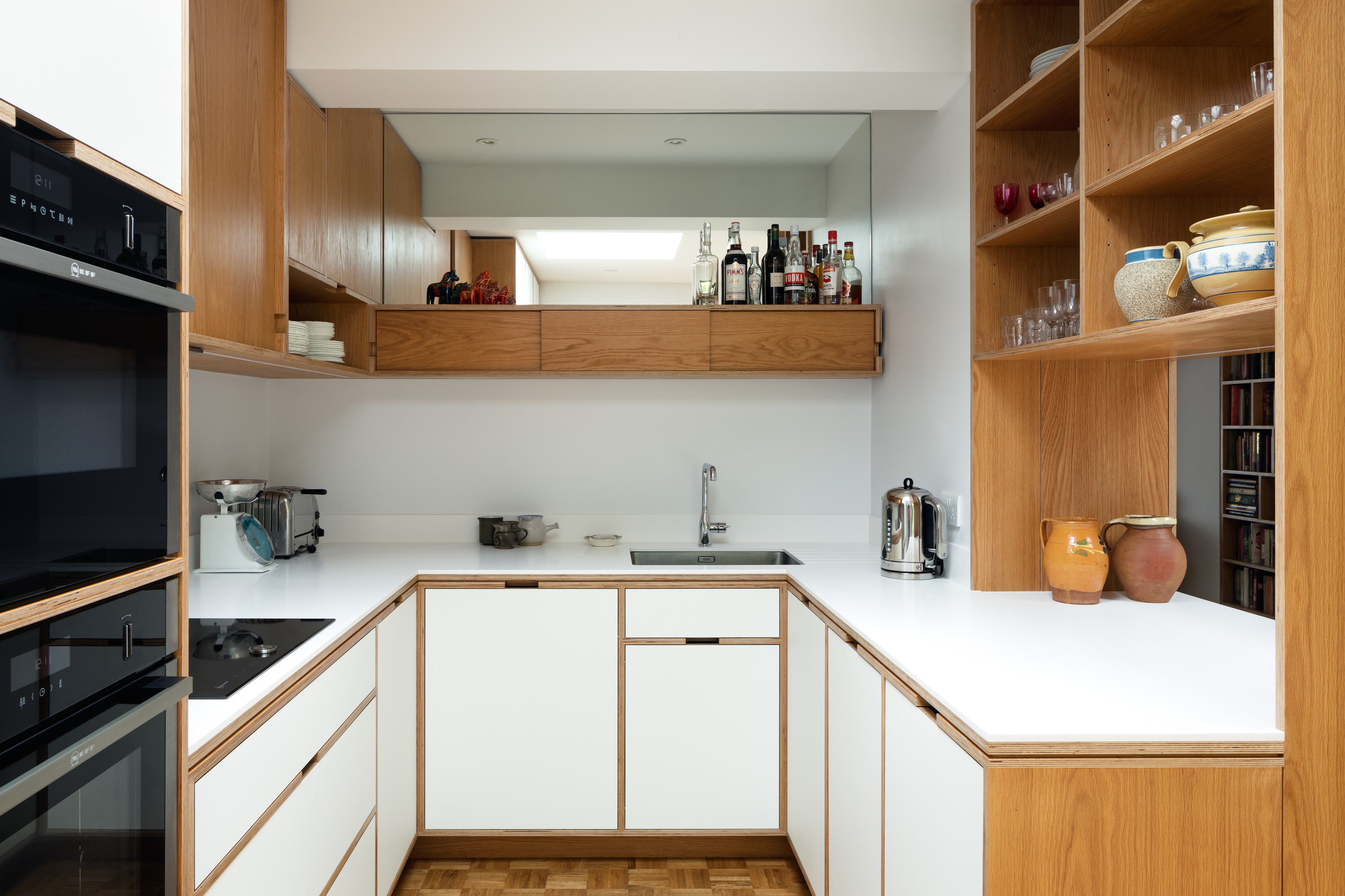
At Uncommon Projects, every kitchen starts with the same foundation: birch plywood. We don’t use it because it’s trendy, and we certainly don’t use it because it’s easy. We use it because it’s the best material we’ve found to build something that lasts.
Ply is at the heart of our design ethos. It allows us to create precise, expressive furniture with clarity and warmth. It’s structurally sound and more moisture-resistant than chipboard or MDF, especially when properly sealed. We’ve spent more than a decade working exclusively with this material, and in that time we’ve found nothing else that offers the same balance of practicality, aesthetics and enduring value as birch plywood.
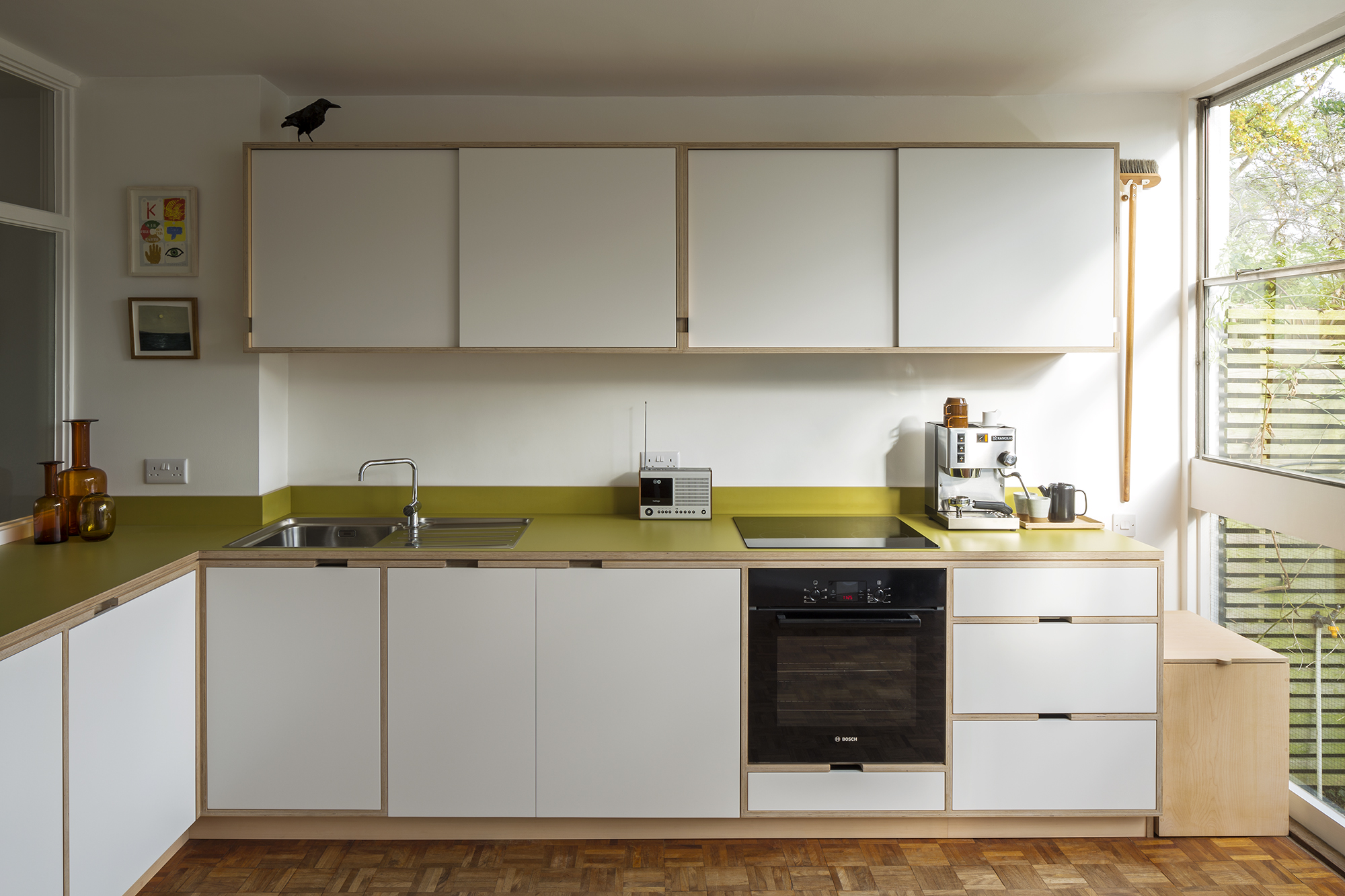
There’s a reason we talk about birch ply, not just any ply. Birch is furniture-grade: strong, stable and beautifully grained. It’s more expensive than lower-grade alternatives like poplar or Chinese ply, but far more consistent and reliable. The warm tone and fine layers of birch give our kitchens their signature look: honest, tactile and elegant.
Birch plywood is typically made from slow-growing Baltic birch, known for its dense core and tight, uniform layers. This results in fewer internal gaps, greater strength, and a more consistent surface — ideal for precision furniture-making.
We often use a hardwood veneer over birch ply, especially for our bespoke work. This allows us to tailor the aesthetic to the architecture while maintaining the structural integrity of a high-quality core. Veneer sometimes gets a bad name — people associate it with cheap coverings or inferior materials — but in our case, it’s a deliberate and practical design decision.
Many kitchens on the market are advertised as “solid wood” or “oak” but use chipboard at their core. That’s not necessarily wrong, but it’s not the same quality and won’t last as long. Ply performs differently. It wears differently. And in our hands, it looks different too.
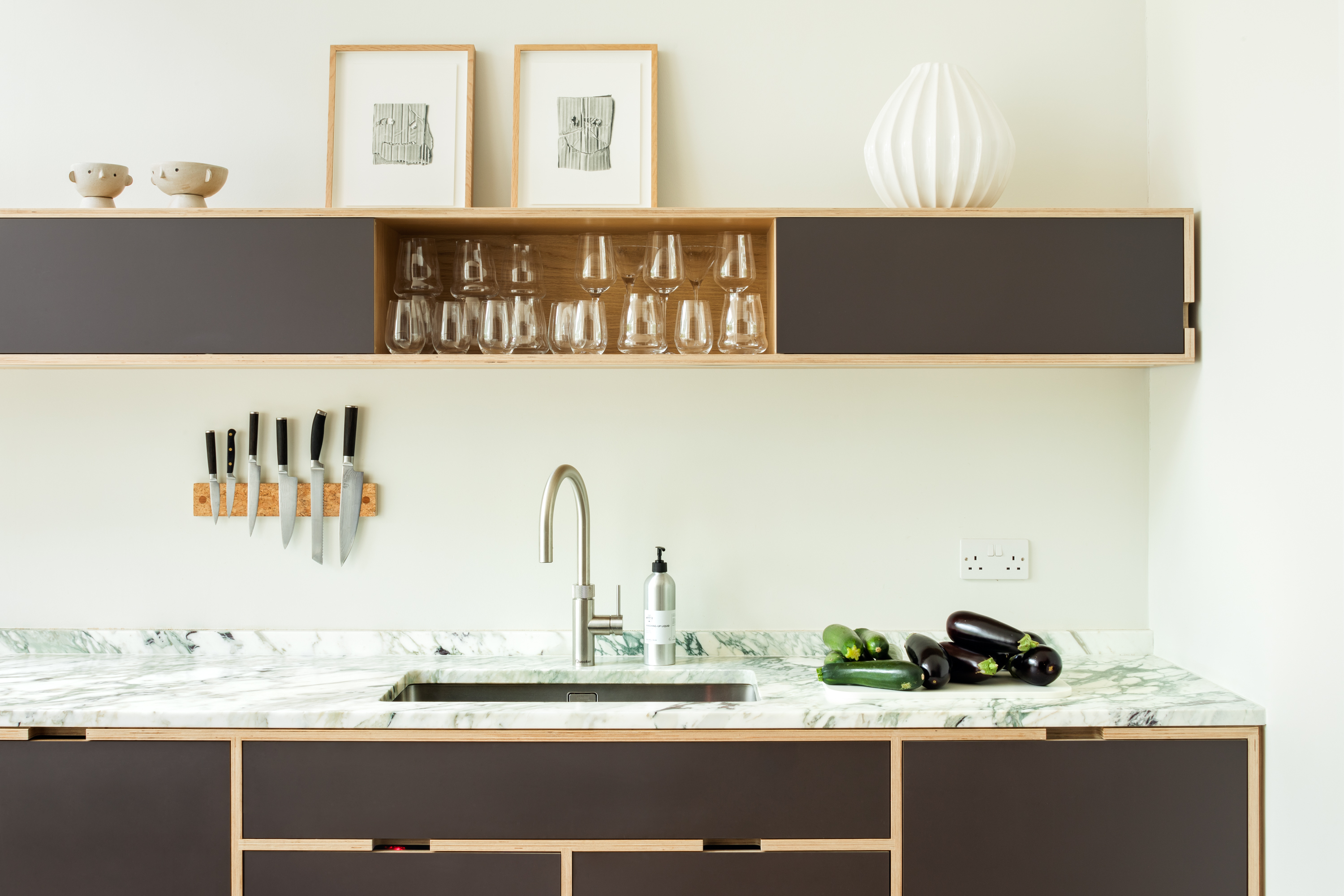
We design kitchens to last a lifetime, and birch ply plays a huge role in that. It’s simply stronger than MDF or chipboard. It holds fixings better, doesn’t sag over time and is more resistant to moisture when properly sealed. Unlike composite materials made from coarse, porous particles that swell and break down when exposed to damp, birch ply’s cross-laminated structure offers greater stability and strength. It behaves more like the tree it comes from, resisting delamination and distortion even in demanding environments. Some of our earliest record storage units are still going strong, 14 years later, without a hint of bowing.
Its strength also gives us freedom. We can design large-scale furniture — such as our distinctive long, narrow wall units with sliding doors — without compromising structure or stability.
We’ve tested everything: poplar ply, moisture-resistant MDF, veneered chipboard. None offered the strength, finish or reliability we needed. We do occasionally use moisture resistant MDF when it’s the best material for the job. But we never use it for load-bearing or structural parts of a kitchen.
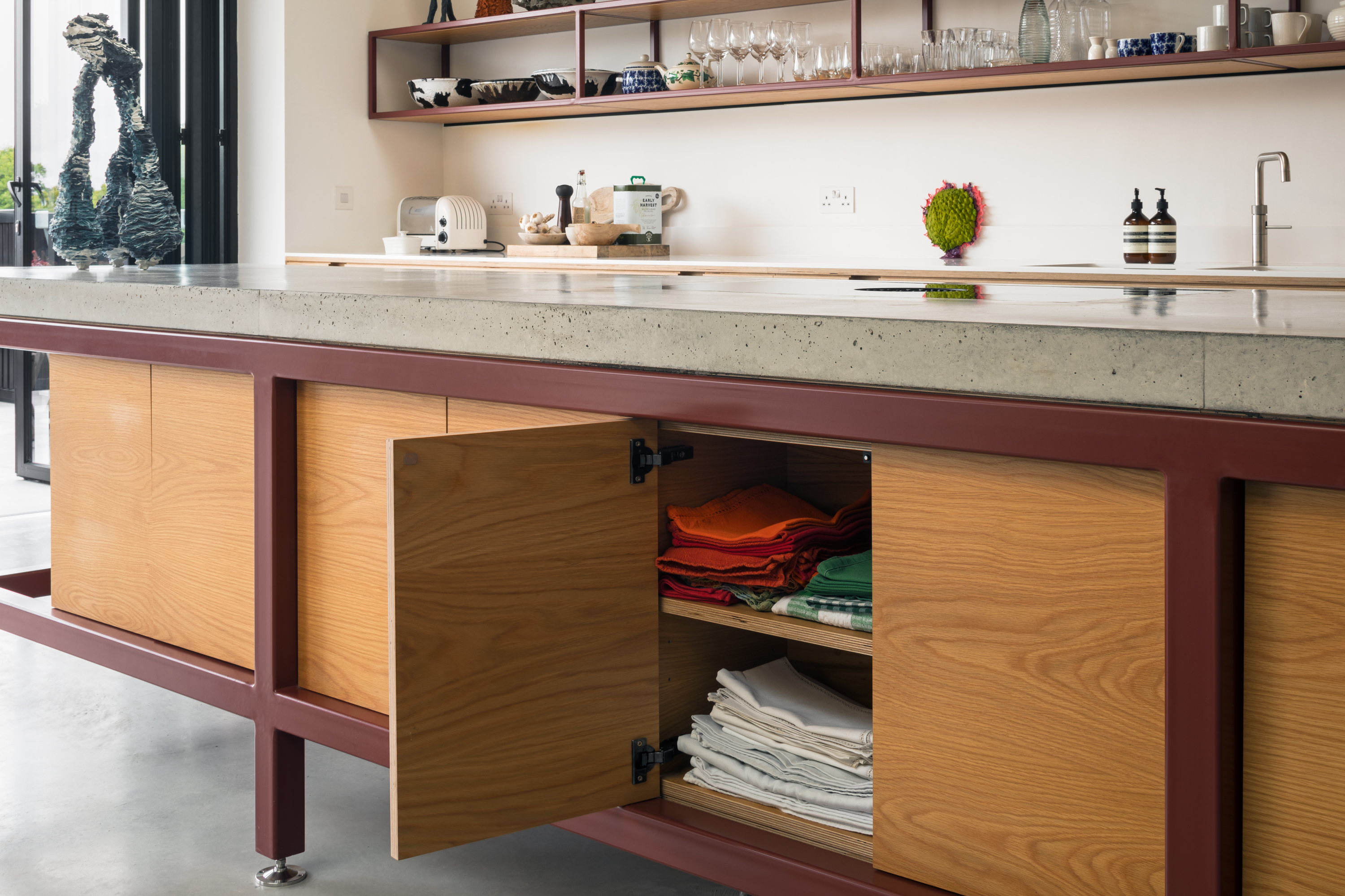
One of the less visible but most important reasons we use plywood is its reliability with fixings. Screws bite well into birch ply, providing long-term strength and stability. This makes a huge difference in kitchen cabinetry: hinges stay tight, joints remain solid and doors stay perfectly aligned.
In contrast, chipboard and MDF are far less dependable. Their crumbly consistency means screw threads can easily strip or loosen over time. The result is misaligned doors, sagging hinges and cabinetry that underperforms and deteriorates quickly.
If you want to know how well a kitchen holds up, ask the maker to show you photos of their work five or ten years on. If they can’t — or won’t — that probably tells you what you need to know.
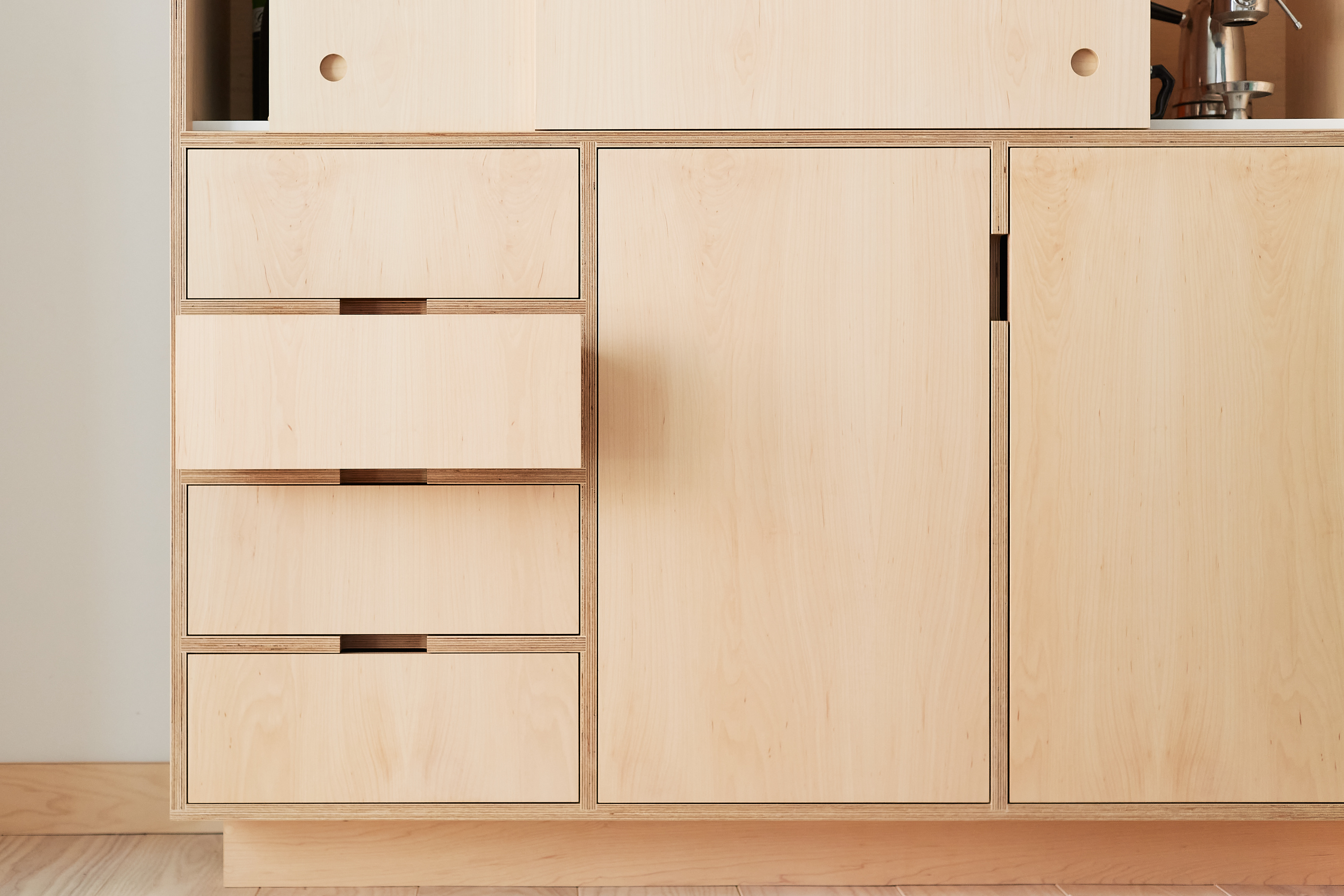
Our design approach celebrates the structure of the kitchen rather than concealing it. You’ll see crisp edges and visible joinery. We use rebated joints for strength and clean lines — never butt joints or corner blocks. Every detail, from joint to drawer slide, is deliberate and robust.
We finish all our cabinetry in hard wax oil. It’s breathable, plastic-free and can be renewed or repaired without stripping everything back. Unlike lacquer or polyurethane finishes, oil allows the material to evolve over time — to age well, not degrade.
Sustainability, for us, begins with longevity. Plywood contains fewer adhesives and chemical binders than MDF or particle board, resulting in a lower-impact manufacturing process. Just as importantly, once assembled, a ply kitchen is far more likely to stand the test of time. The chassis — most kitchen companies call it a carcass — is the foundation of any kitchen. It’s the structure beneath the surface that truly defines a kitchen’s longevity.
Most plywood kitchen companies focus on the parts you can see: the ply fronts and worktops. But the biggest savings are often made where you’re not looking — in the carcass. This is where lower-cost kitchens cut corners, using inferior materials like chipboard or MDF that won’t stand up to years of use. We believe the internal structure should be as thoughtfully constructed as the external finish. After all, it’s the part that has to last the longest.
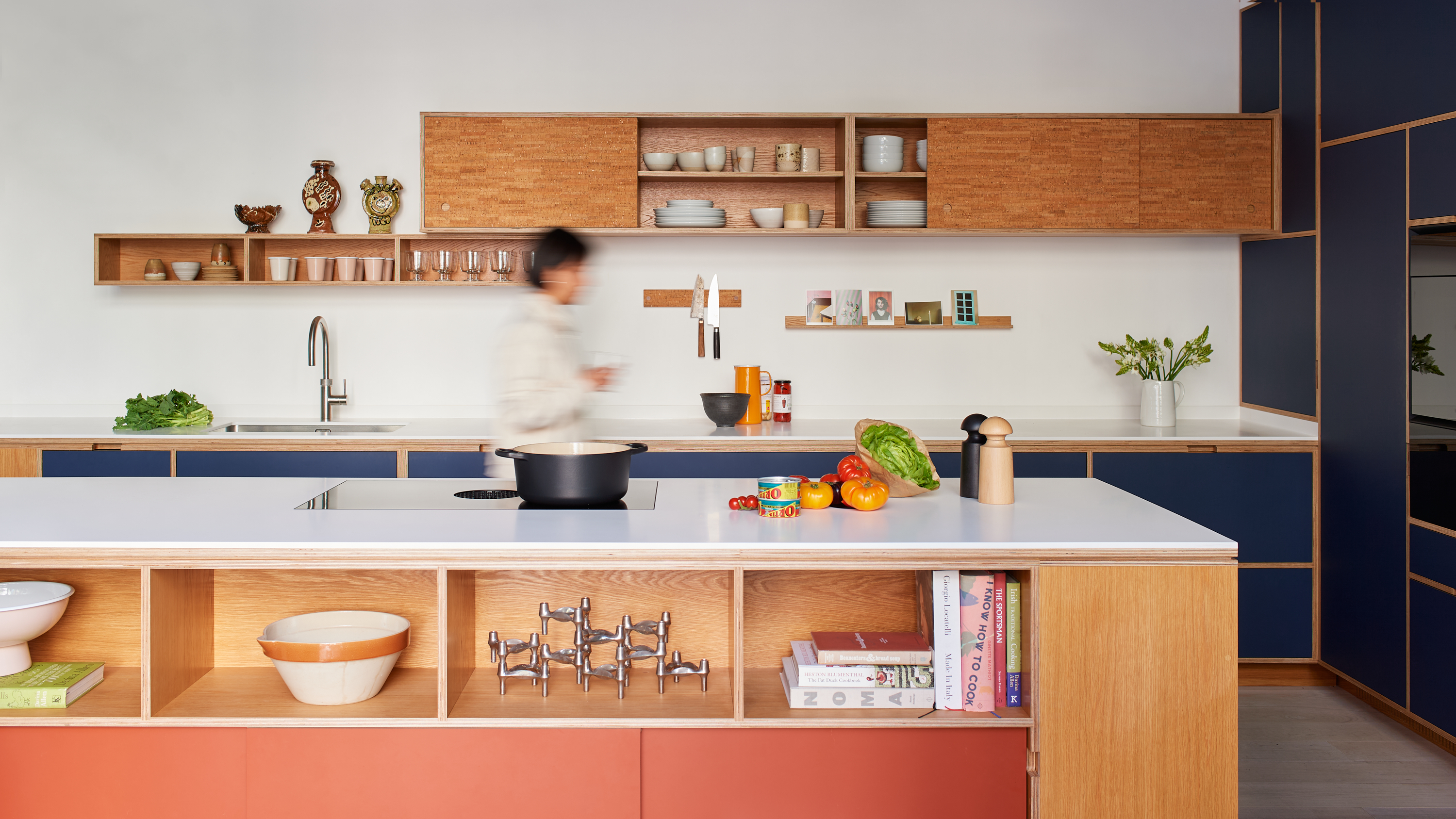
When comparing kitchens, ask what the carcasses are made from — not just the doors. A “solid oak” kitchen might only refer to the fronts, while the structure behind them is chipboard. Moisture-resistant MDF might be appropriate for some elements, like large flat panels, but it should never form the whole frame.
Knock on the panels and listen. If it sounds hollow, it’s likely veneered chipboard.
Visit multiple showrooms. Open drawers. Feel the weight. Inspect the corners. If a company hasn’t got the details right in its own showroom, it won’t in your home either.
And ask what “bespoke” really means. Are they designing from first principles, or dropping options into a standardised template? Both approaches can work — but it’s important to know what you’re buying.
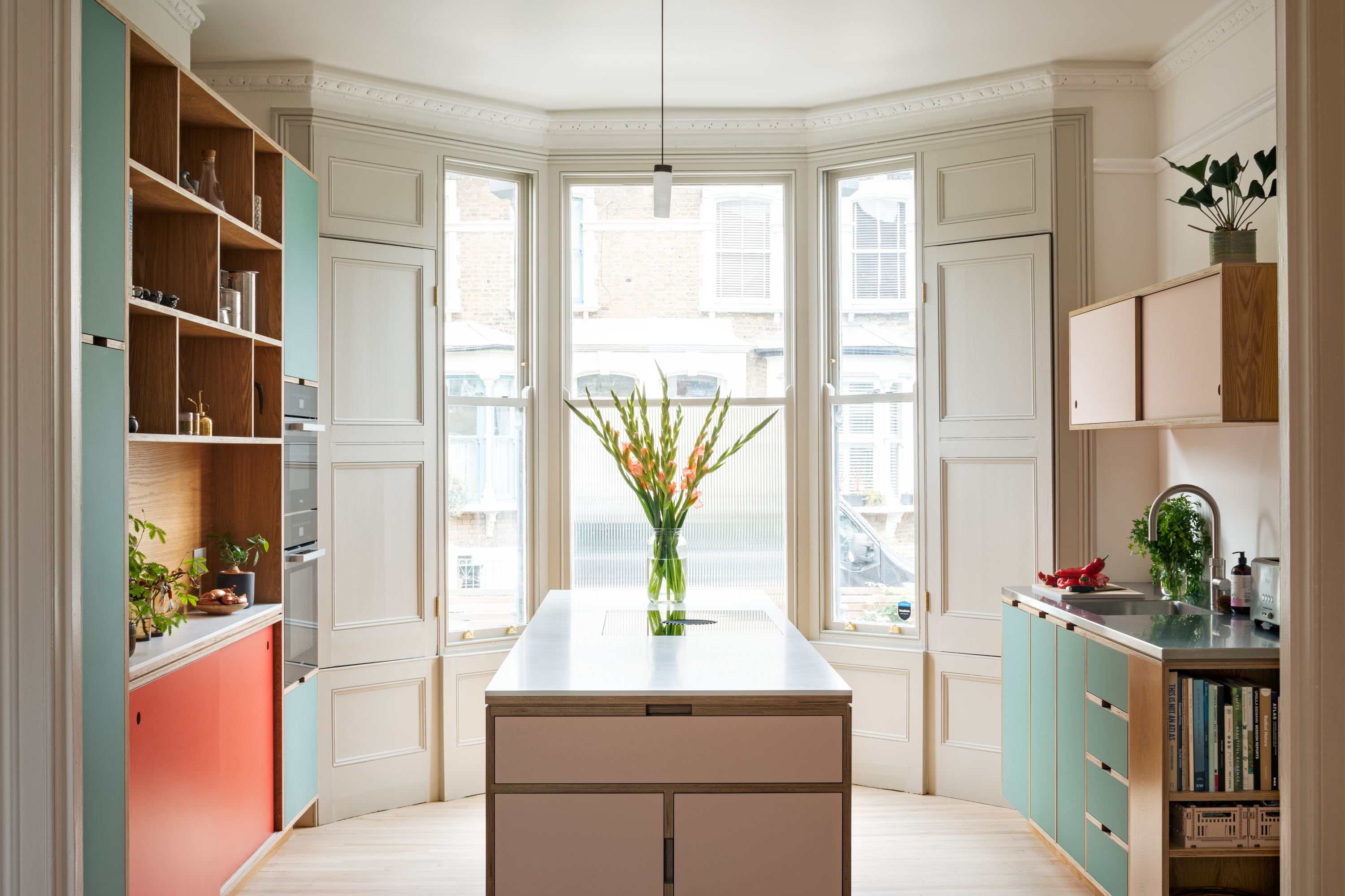
Plywood has sometimes been pigeonholed as trendy or mid-century. But that’s a limitation of perception, not of the material. We’ve installed plywood kitchens in everything from Georgian terraces to contemporary new-builds.
We don’t see plywood as a style. We see it as a standard — a way of working that prioritises structural honesty, lasting quality and thoughtful kitchen design. That’s why we use ply. And why we always will.
Keep reading our design guides, product advice and stories from our Uncommon friends.